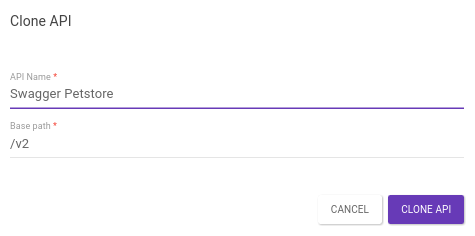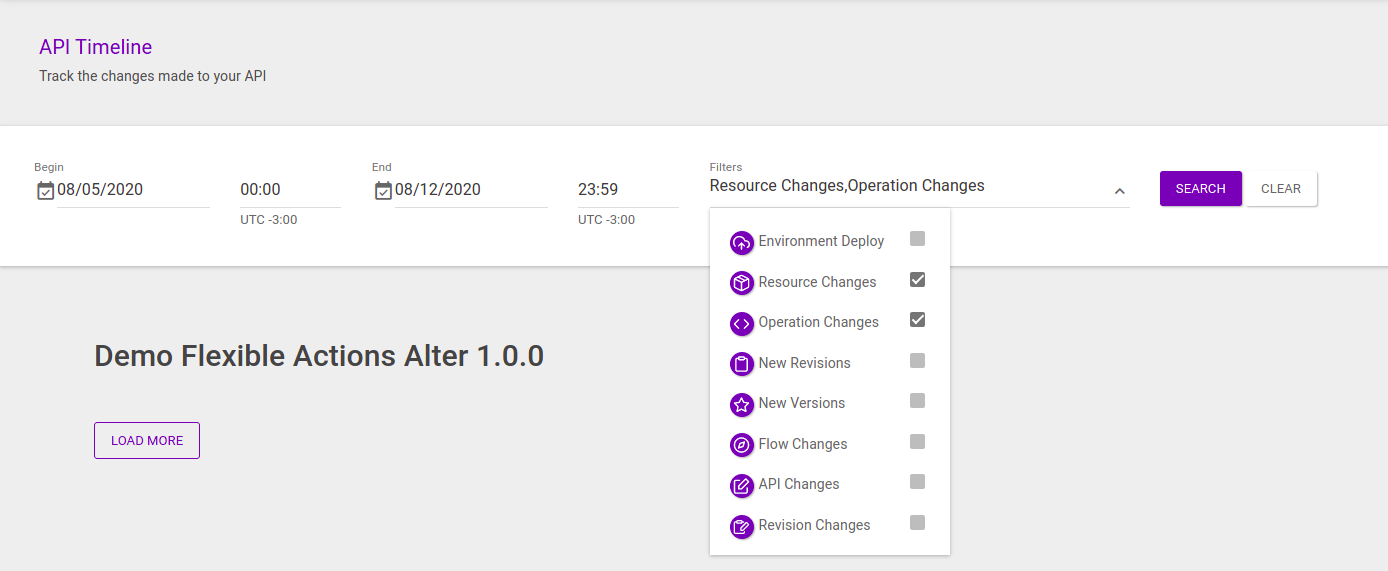API Cards
The API Catalog screen exhibits all existing APIs through cards showing basic information regarding each API.

Each card includes the API name (in the example above, "Swagger Petstore"), its version (in the example, "1.0.0") and a brief description. The plans linked to each API are shown in the respective field.
The buttons on the bottom of the card allow access to some functionalities, which you can check below.
Edit Swagger
This button allows the user to view and edit the API in Swagger format to make changes in its structure through a Swagger editor. For more information, click here.
API Trace
It redirects the user to the API Trace page (where all requests to the API can be viewed).
| The API Trace page accessed through the card works as a filter of the General Trace menu. While the latter shows the requests to all registered APIs, API Trace displays the requests made to the specific API at hand. |
Clone API
This button is used to create a new API using the data of the current one, including its resources and interceptors. When cloning an API, the name and version of the clone must be changed.

Create Version
This button is used to generate a new version of the API. Upon clicking it, a new screen is opened, with all fields of data filled to make the creation of the new version easier. The user can alter the data, if necessary, and follow the regular flow of creating a new API.
API Timeline
This button opens the Timeline page, which shows all changes made to the API chronologically.

You can filter the alterations by date and type:

With the filters, the user can customise the visualisation of changes, which helps to keep track of what has been deployed and of unwanted changes.
In the example above, we are filtering the results by changes in resources and operations.
| Some modifications in an API already deployed to an environment are accompanied by "undeploy" and "deploy" notifications on the timeline. This happens because the API is automatically removed and re-deployed so that the modification in its registry is saved (such as a new description or change of visibility context, for example). This does not cause unavailability of the API. |
Share your suggestions with us!
Click here and then [+ Submit idea]